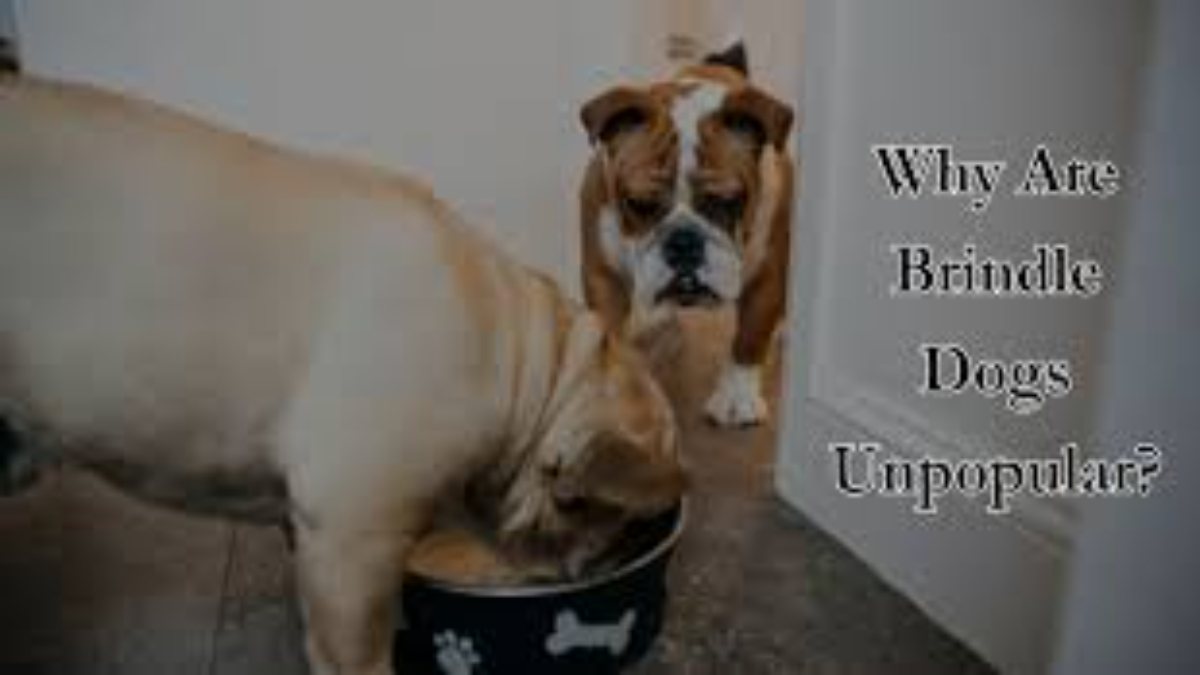Unpopularity of brindle dogs coats have an enthralling color combination defined by dark-hue streaks or stripes woven with lighter tones to produce an eye-catching visual effect. From the stately Great Dane to the energetic Boxer, this unique pattern can appear in various breeds, giving each brindle dog a unique and endearing quality. Brindle dogs are lovely, but they are frequently overlooked in popularity. For more information on dogs and their dietary needs, visit Can Dogs Eat Yellow Rice.
Several factors contribute to brindle dogs’ perceived unpopularity, such as cultural prejudices. Prevailing breed standards favor solid colors and false beliefs about the temperament and behavior of dogs with brindle coats. These elements have combined to make brindle dogs seem undervalued despite their indisputable charm and distinct personalities.
Historical and Cultural Factors
Brindle dog stereotypes and historical associations are deeply embedded, preserving beliefs and cultural perceptions that date back centuries. Some societies have highly regarded these dogs for their strength and usefulness, while others have denigrated them because of superstitions or their coat color.
Even though they are frequently unfounded, these prejudices have endured over time, affecting perceptions of brindle dogs and making them seem unpopular. In addition, cultural factors significantly impact how people view beauty and what dog breeds they prefer, which results in differing degrees of acceptance and admiration for brindle-coated dogs in various communities and locales.
Breed-Specific Considerations for unpopularity of brindle dogs
The intricate relationship between utility, tradition, and aesthetics can be seen in coat color preferences and breed standards. Breed standards dictate which breeds prefer solid colors or specific markings, while some consider the brindle coat pattern desirable. Sometimes, according to breed standards, brindle coloring needs to be officially recognized or is less prevalent.
It’s common for breeds with popular solid coats, like Labradors or Golden Retrievers, to be unaware of or uninterested in brindle variations. Established standards significantly influence the dog breeding community; breed preferences are subjective. This is reflected in the acceptance gap.
Misconceptions and Stereotypes
Common misconceptions about brindle dogs’ behavior and temperament frequently perpetuate these stereotypes. Many people mistakenly think that dogs with brindle coats are aggressive or hard to train, and they blame their appearance for these misconceptions.
However, these false beliefs ignore every dog’s uniqueness and are unfounded. Dispelling myths about temperament and suitability as pets requires addressing stereotypes related to these topics. We can dispel these myths and advance a more accurate understanding of these cherished companions by introducing the variety of personalities and temperaments found among brindle dogs and stressing responsible ownership and training methods.
Personal Preferences and Trends
Personal tastes and aesthetics are significant factors in dog adoption decisions, often dictating the breed and coat pattern. Different coat patterns are more or less prevalent depending on how much a person identifies with a dog that fits their subjective standards of companionship and beauty.
Familiarity, perceived symbolism, and cultural influences all influence these preferences. Likewise, dog breeding developments significantly impact which coat patterns are more popular than others. The demand for particular coat colors and patterns can fluctuate in the dog breeding business because breeders may selectively breed for specific traits or take advantage of prevailing fashion trends.
Overcoming unpopularity of brindle dogs
Clearing the air and building respect for these sometimes misunderstood dogs requires raising awareness of brindle dogs and their distinctive characteristics. Advocates can highlight the intelligence, adaptability, and loyal nature of brindle dogs, as well as the wide range of personalities and temperaments that they can have. This will highlight their potential to be devoted and loving companions.
Unpopularity of brindle dogs are highly valued in the world when responsible breeding methods are promoted, and they are supported in shelters. By supporting ethical breeding standards and encouraging adoption from reliable sources, people can contribute to ensuring the welfare and well-being of brindle dogs, reducing the overrepresentation of specific coat patterns in breeding programs, and lowering the number of brindle dogs in shelters.
Furthermore, it is critical to challenge stereotypes and advance inclusivity within the dog-loving community by advocating for altered perceptions and increased acceptance of brindle dogs. Advocates can endeavor to create a more hospitable and encouraging environment for brindle dogs, where they are appreciated for their distinctive qualities and treasured as cherished companions through education, outreach, and positive representation.
Summary
When one considers the reasons behind the unpopularity of brindle dogs, one finds that deeply rooted assumptions and cultural prejudices have unfairly relegated these dogs to the fringes of the dog community. However, something has to be done immediately to encourage acceptance and respect for dogs with different coat patterns.
People can contribute to making a more hospitable environment for unpopularity of brindle dogsby dispelling myths, supporting ethical breeding methods, and encouraging an accepting culture. We can all work together to change attitudes and embrace the variety of our dog friends through advocacy, education, and positive portrayal. By doing this, we can ensure that every dog, regardless of coat color, gets their desired affection and attention.
